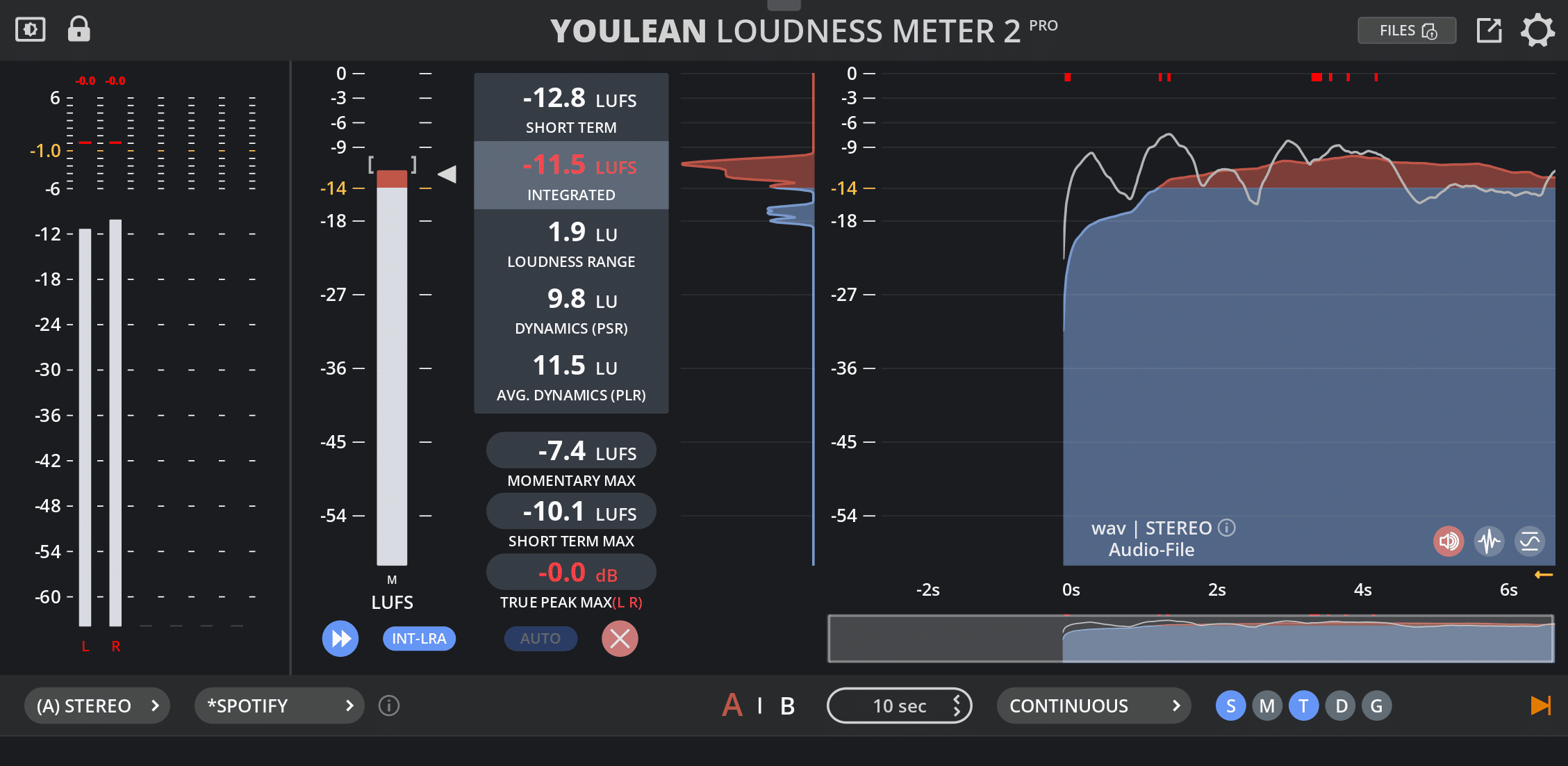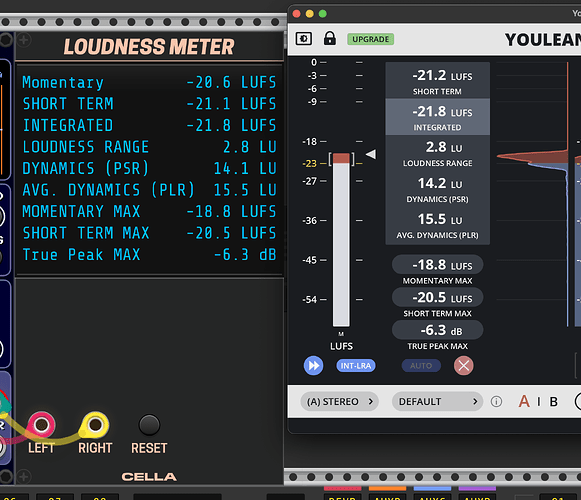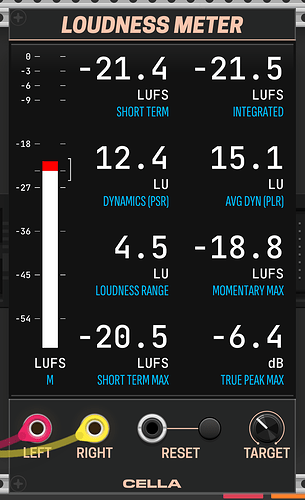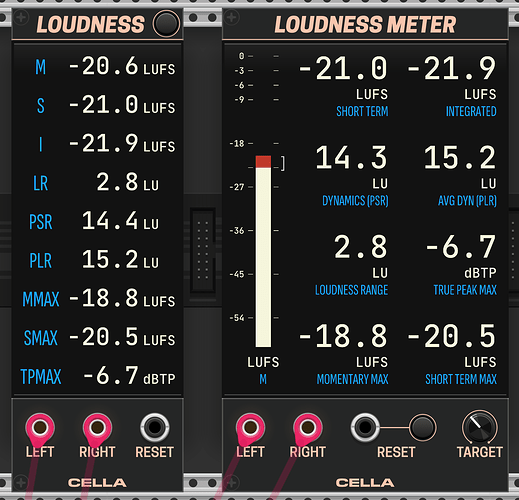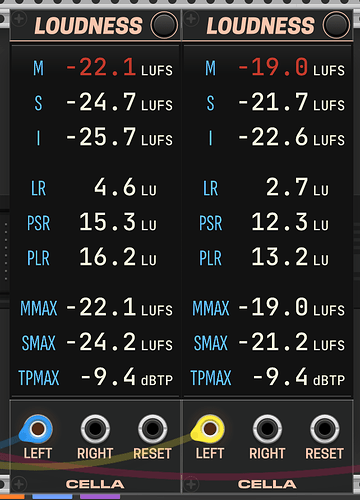As far as I know there is currently no LUFS/LKFS Loudness Meter in VCV Rack?
When I was mainly using DAW+plugins, there was always a (realtime) LUFS Meter at the end of the chain.
Wikipedia on LKFS/LUFS:
Loudness, K-weighted, relative to full scale (LKFS ) is a standard loudness measurement unit used for audio normalization in broadcast television systems and other video and music streaming services.[1][2][3]
Loudness units relative to full scale (LUFS ) is a synonym for LKFS that was introduced in EBU R 128.
Example LUFS Loudness Meter
So…on Loudness and LUFS…metering and perceiving…
LUFS Loudness Metering is my favorite way to check some vital amplitude/loudness related info (including dynamics) and ensure equal loudness. Both when creating/modifying tracks/patches and when rendering to file/disk. Also…to protect my ears by not trusting perception.
Generally aiming for -1 dbFS peak and -14 LUFS integrated (although other reference levels are also used).
The official AES recommendation
(…) it should be noted that the Audio Engineering Society has made a set of recommendations in the form of AESTD1008. It’s a comprehensive document, but here are some of the highlights:
- Use album normalization whenever possible, even for playlists
- Normalize speech to -18 LUFS
- Normalize music to -16 LUFS. If using album normalization, normalize the loudest track from the album to -14 LUFS
Loudness: frequency dependent perception
So, just setting your amp set at the same setting/amplitude is not enough. The physics behind the logarithmic dB’s SPL scale is not the only factor when perceiving Loudness.
There’s also frequency dependent loudness perception: the (Fletcher-Munson) Equal Loudness contour curves.
LUFS Loudness Metering basically solves for this by measuring and integrating Loudness for multiple frequency bands.
Another quirk in human sound perception is that the louder the sound/music, the more it grabs our attention. And for music, the louder the music (obviously below pain levels), the more people tend to like it (when compared to the same music at lower volume).
So…as with many things: you can’t just trust your perception. Things sound actually different at different levels. Metering can help to compensate/standardize/objectify. Especially when also striving for equal loudness between tracks.
But there is more…
Loudness: peaks vs dynamics
Exploiting loudness perception eventually led to the Loudness War where loudness/amplitude/dB SPL is pushed to the max, and after that…beyond the max…by compressing the audiosignals ever more, effectively crushing the dynamics (the difference between the softer and louder parts).
Check out the Dynamic Range of many thousands of albums: Dynamic Range DB (where, I set the sort order from min to max for Dynamic Range).
Standardization in Music
In Movie and TV Loudness was soon standardized…but in Music, this did not happen. But, with the drop in sales/use of physical media and ‘legacy/linear’ media like TV, the introduction of new audio/video (file) formats (MP3/MP4, OGG Vorbis, FLAC), personal mediaplayers and streaming platforms (Youtube, Spotify), Equal Loudness really became a thing.
Individual tracks/videos were suddenly played in unintended, unpredictable sequences (random/playlists). This caused sudden jumps in perceived Loudness between tracks/videos, forcing listeners to constantly adjust the Volume.
This led to using solutions like ReplayGain and further standardization (although various services might use different reference levels).
At Izotope, there a nice article on the many aspects of Loudness. You can also check how various music/streaming services handle Loudness…: Mastering for streaming platforms.
More: Dynamic Range and the Loudness War on Sound On Sound
Implementation of LUFS Metering
There is lots of information on EBU R128 and LUFS available. Including implementations of LUFS Metering.
The Wikipedia LUFS page also references the algorithm.
- ^ ITU-R BS.1770-5 Algorithms to measure audio programme loudness and true-peak audio level (PDF), International Telecommunication Union
